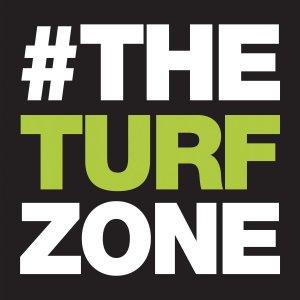The Turf Zone Podcast

Alabama Turfgrass Association – Turfgrass Cultivation Tools: Where, When & How to Use Them in Your Cultural Program
ATA Turf Times – Barry Stewart, Ph.D., Associate Professor, Sports Turf Science, Mississippi State University
Unlike most other crops, turfgrass soils are rarely exposed to tillage and therefore many turfgrass soils become compacted due to traffic. Our cultivation program is our best defense against soil compaction and the myriad of problems it can cause. In turfgrass, nearly everything we do — mowing, fertilizing, topdressing, rolling, playing games, etc. — happens on the horizontal plane. Turfgrass cultivation is one of the few things that happens on the vertical plane (I borrowed this from Dr. Trey Rogers at Michigan State). As we maintain and use turf soils, downward forces are applied and soil particles are pushed closer together. Soil pores, particularly macropores, are eliminated and the bulk density of the soil increases. If we think of an “ideal soil” we think of one that has 50% pore space and 50% solid space. When we consider that quartz is the dominant mineral in soils, then our ideal soil would have a bulk density of 1.33 g/cm3 given that the density of quartz is 2.65 g/cm3 (83 lbs/ft3). A bulk density range of 1.2 to 1.5 g/cm3 is a good working range for healthy turfgrass. Once bulk densities creep above 1.6 g/cm3 root growth begins to be affected and at bulk densities above 1.9 g/cm3 root growth nearly stops. Roots are not drills, they grow in the pore space, and compacted soils have less and less pore space, particularly macropore space and therefore limited root growth.
The second benefit of cultivation is the control of thatch and organic matter accumulation. In cultivation we break up the organic material accumulating at the turf surface. Sometimes the material is removed when we harvest the cores after aerifying or sweep up the clippings after we vertical mow or fraze mow. By keeping the rootzone in a favorable state of aeration, organic matter accumulation will be kept to a minimum as oxidation will proceed at its maximum rate. As organic matter accumulates and compaction happens, the rootzone is less well-aerated and organic matter decomposition slows down and organic matter accumulation increases. This leads to more moisture being held in the soil making it more vulnerable to compaction, and we begin on a downward spiral in which turf cover is lost. Topdressing is another tool in this battle with organic matter accumulation and will be the subject of a future article.
This article is written with warm season grasses in mind. The need for cultivation will vary with grass type and soil type. In general, native soils have a greater need for cultivation than sand-based soils. It is ironic that sand-based turf is more likely to receive cultivation than a native soil, but this is probably not surprising given the cost to establish and maintain grass on sand construction. Bermudagrass and zoysiagrass make up the vast majority of sport turf surfaces and require more cultivation. Some St. Augustine and centipede grass that receives traffic may also need occasional cultivation, but this should be done carefully. To ensure rapid recovery from any cultural practice mowing, make sure we have temperatures favorable for turf growth, 70 degree nights or 150 days with plenty of water available.
Core Cultivation / Hollow Tine Cultivation
Hollow tine cultivation is the cornerstone of any cultivation program. It should be a “showstopper” in that it should be a scheduled event. My mind’s picture of the benefit of core cultivation is that as our turfgrass soil becomes compacted, the elevation of our surface would decline. When we pull cores, we create a new large pore (the hole) and bring material back to the surface. As the cores are broken up and drug back into the holes not all of the material will fit into the holes and some will remain on the surface adding elevation to the surface. If the cores are collected and new material is top-dressed onto the site,






 Visit Podcast Website
Visit Podcast Website RSS Podcast Feed
RSS Podcast Feed Subscribe
Subscribe
 Add to MyCast
Add to MyCast